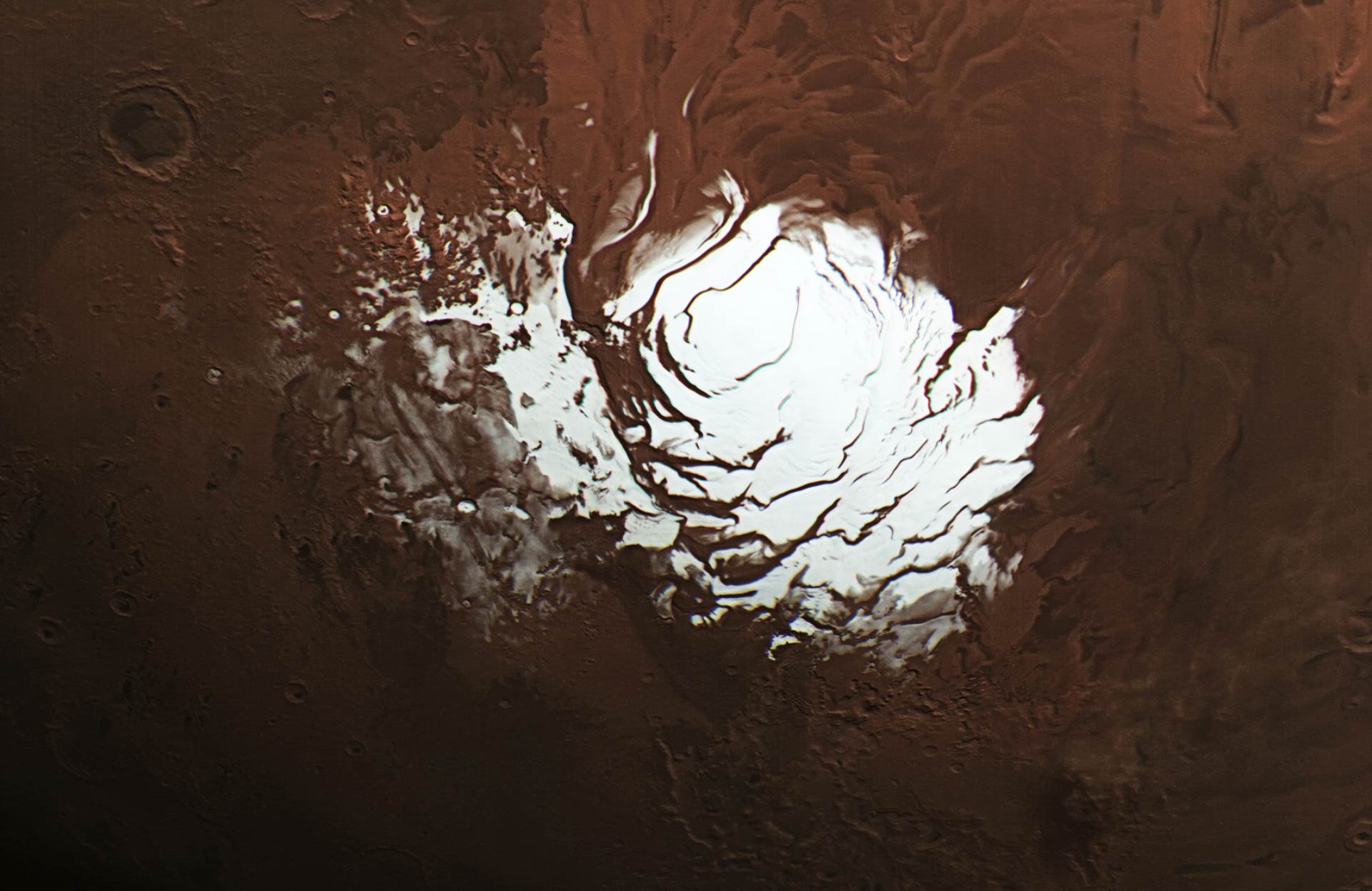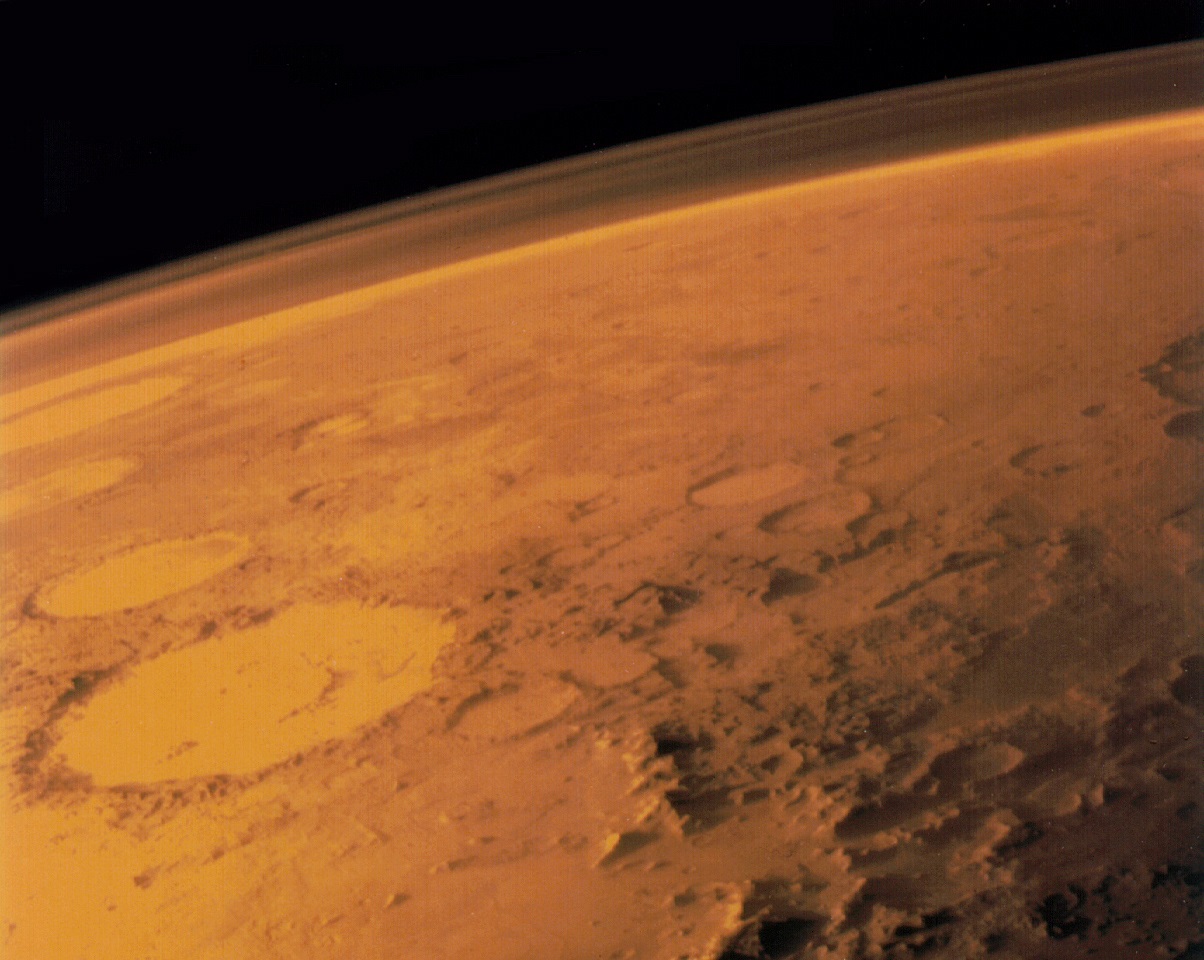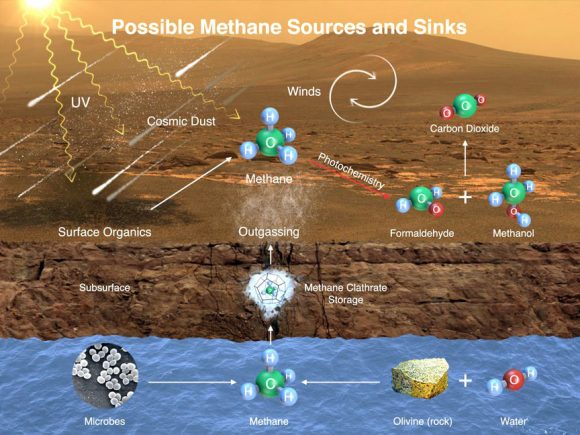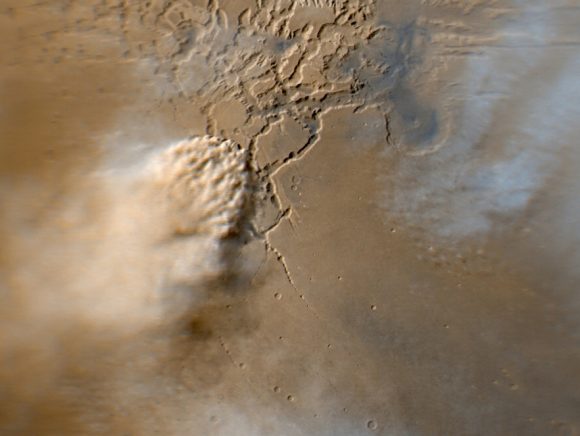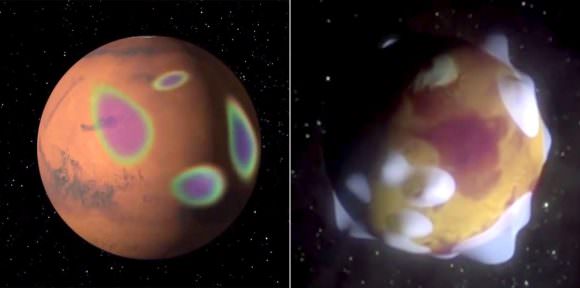For decades, scientists have tried to crack the mystery of Mars’ weather patterns. While the planet’s atmosphere is much thinner than our own – with less than 1% of the air pressure that exists on Earth at sea level – clouds have been seen periodically in the skies above the surface. In addition, periodic snowfalls has been spotted over the years, mainly in the form of carbon dioxide snow (i.e. dry ice).
However, according to a new study by a team of French and American astronomers, Mars experiences snowfalls in the form of water-ice particles. These snowfalls occur only at night, coinciding with drops in global temperature. The presence of these storms, and the speed at which they reach the surface, is forcing scientists to rethink Mars’ weather patterns.
The study, titled “Snow Precipitation on Mars Driven by Cloud-Induced Night-Time Convection“, recently appeared in the journal Nature Geosciences. Led by Aymeric Spiga, a tenured lecturer at the Université Pierre et Marie Curie and a researcher at Laboratoire de Météorologie Dynamique in Paris, the team conducted numerical simulations of Mars’ cloudy regions to demonstrate that localized convective snowstorms can occur there.
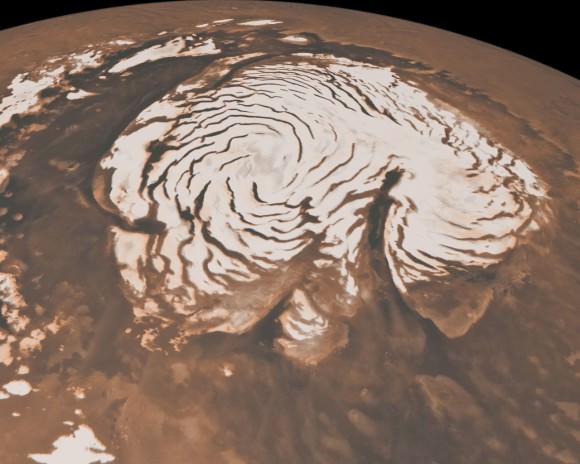
For decades, scientists believed that Mars experienced snowfall in the form of frozen carbon dioxide (aka. dry ice), particularly around the south pole. But it has only been in recent years that direct evidence has been obtained. For instance, on September 29th, 2008, the Phoenix lander took pictures of snow falling from clouds that were 4 km (2.5 mi) above its landing site near the Heimdal Crater.
In 2012, the Mars Reconnaissance Orbiter revealed additional evidence of carbon-dioxide snowfalls on Mars. And there has also been evidence in recent years of low-falling snows, which appear to have helped shape the Martian landscape. These include a relatively young gully fan system in the Promethei Terra region of Mars, which researchers at Brown University determined were shaped by melting snow.
Further, in 2014, data obtained by the ESA’s Mars Express probe showed how the Hellas Basin (a massive crater) was also weathered by melting snows. And in 2015, the Curiosity rover confirmed that the Gale Crater (where it landed in 2012) was once filled by a standing body of water. According to the science team’s findings, this ancient lake received runoff from snow melting on the crater’s northern rim.
All of these findings were rather perlexing to scientists, as Mars was thought to not have a dense enough atmosphere to support this level of condensation. To investigate these meteorological phenomena, Dr. Spiga and his colleagues combined data provided by various Martian lander and orbiter missions to create a new atmospheric model that simulated weather on Mars.
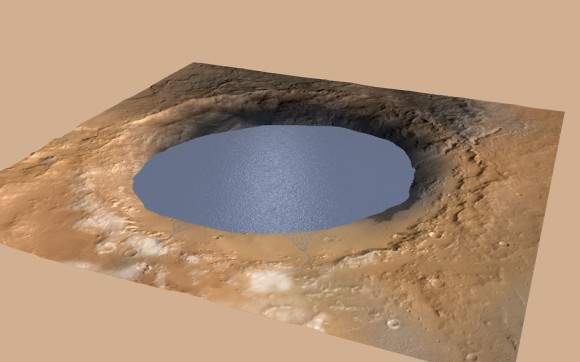
What they found was that during the nights when Mars’ atmosphere became cold enough, water-ice particles could form clouds. These clouds would become unstable and release water-ice precipitation, which fall rapidly to the surface. The team then compared these results to localized weather phenomena on Earth, where cold dense air results in rains or snow falling rapidly from clouds (aka. “microbursts”).
As they state in their study, this information was consistent with data provided by Martian lander and orbiter missions:
“In our simulations, convective snowstorms occur only during the Martian night, and result from atmospheric instability due to radiative cooling of water-ice cloud particles. This triggers strong convective plumes within and below clouds, with fast snow precipitation resulting from the vigorous descending currents.”
The results also contradicted the long-held belief that low-lying clouds would only deposit snow on the surface slowly and gently. This was believed to be the case based on the fact that Mars has a thin atmosphere, and therefore lacks violent winds. But as their simulations showed, water-ice particles that lead to microburst snowstorms would reach the ground within minutes, rather than hours.
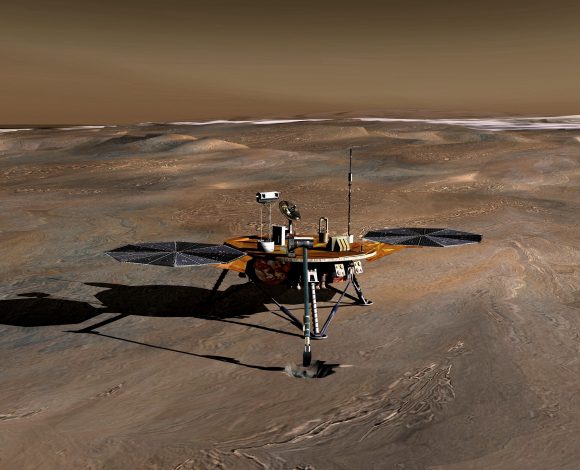
These findings indicate that Martian snowstorms also have a profound influence on the global transport of water vapor and seasonal variations of ice deposits. As they state further:
“Night-time convection in Martian water-ice clouds and the associated snow precipitation lead to transport of water both above and below the mixing layers, and thus would affect Mars’ water cycle past and present, especially under the high-obliquity conditions associated with a more intense water cycle.”
As Aymeric Spiga explained in an interview with the AFP, these snows are not quite what we are used to here on Earth. “It’s not as if you could make a snowman or ski,” he said. “Standing on the surface of Mars you wouldn’t see a thick blanket of snow—more like a generous layer of frost.” Nevertheless, these findings do point towards their being some similarities between the meteorlogical phenomena of Earth and Mars.
With crewed missions to Mars planned for the coming decades – particularly NASA’s “Journey to Mars“, scheduled for the 2030s – it helps to know precisely what kinds of meteorological phenomena our astronauts will encounter. While snowshoes or skis might be out of the question, astronauts could at least look forward to the possibility of seeing fresh snow when they wake up in their habitats!
Further Reading: AFP, Nature Geoscience

